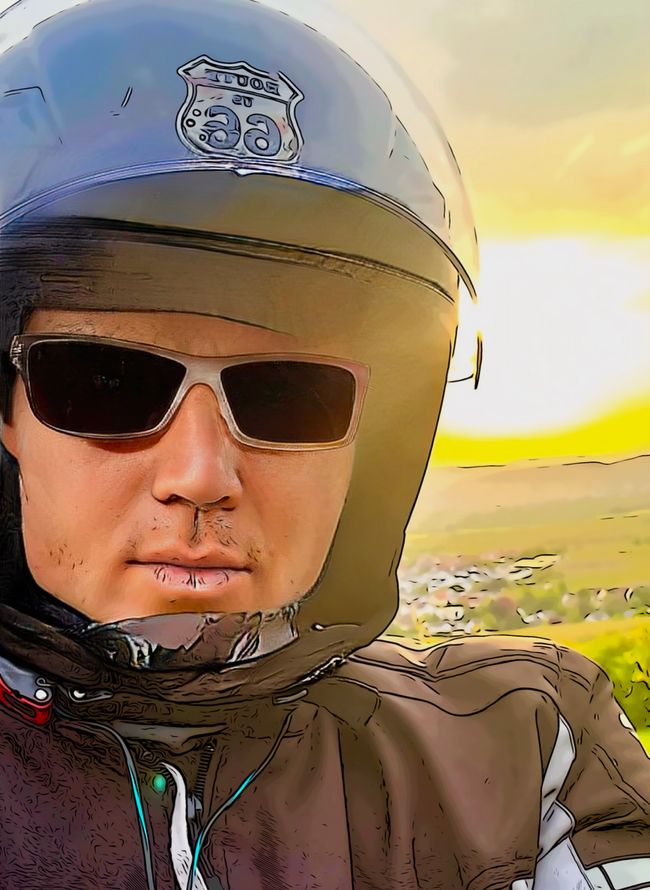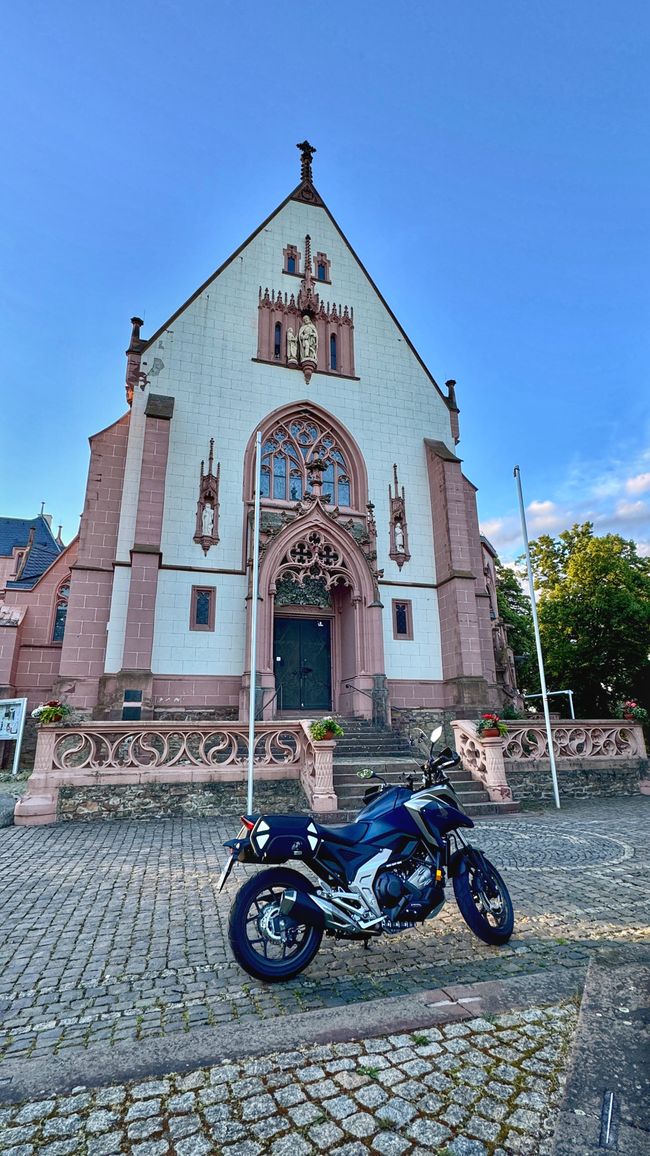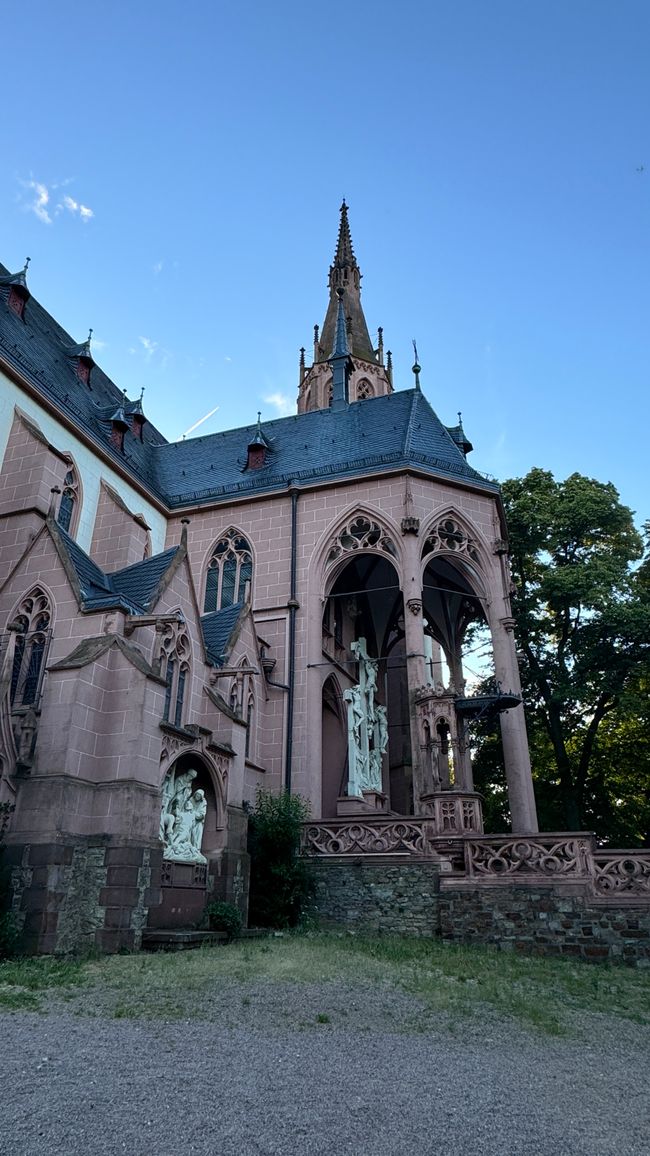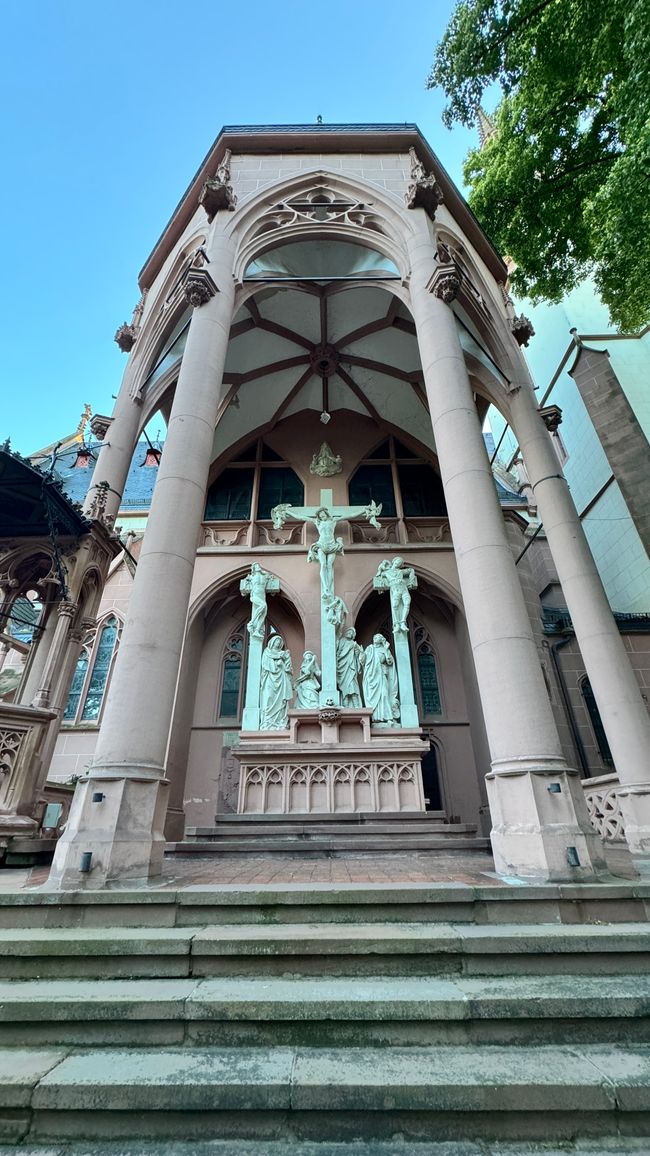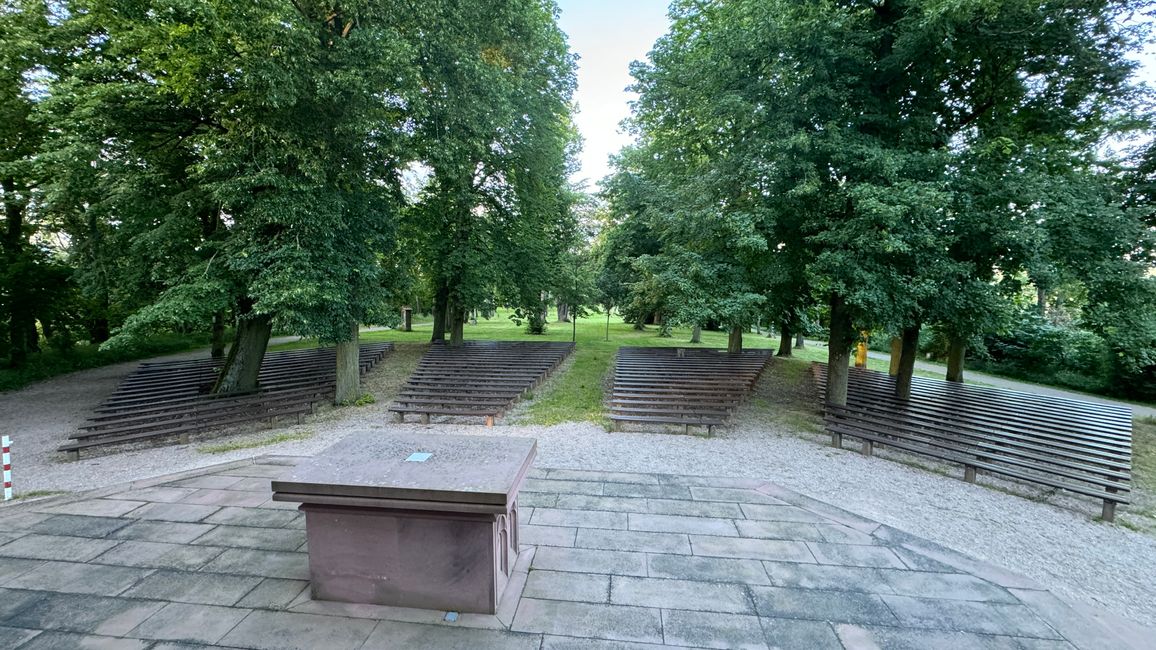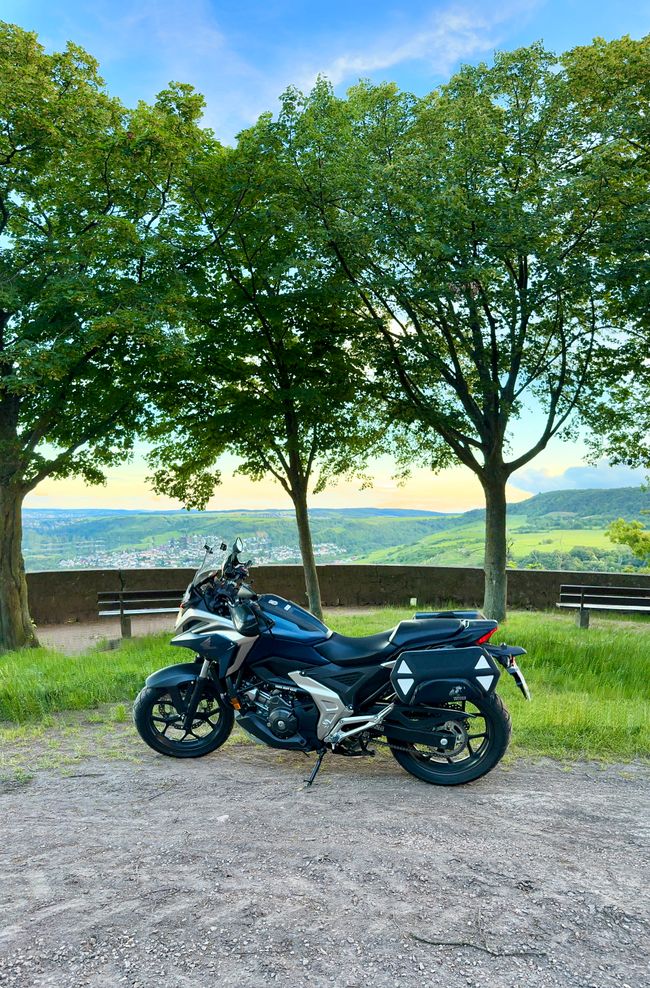Tour to Bingen to the Rochus Chapel
פֿאַרעפֿנטלעכט: 19.06.2024
I have to prepare for my tour somehow and what could be better than using every free minute to go on tours and become one with the new machine. This time I took a little tour to Bingen to the Rochus Chapel. I don't really think the term chapel is right. It's more of a small church. It's on a hill in Rheinhessen, above the rooftops of Bingen, with a wonderful view of the Rhine and the surrounding hills.
The first chapel was built by returning crusaders during the Crusades. In 1417, the Archbishop of Mainz, Johann II of Nassau, united the foundations associated with the Bethlehem Chapel with St. Martin (Bingen), which had been completely impoverished by a great fire. The chapel subsequently fell into disrepair and was forgotten.
The first Rochus Chapel was built after the plague year of 1666.
In 1795, during the French occupation of the Rhine Valley, it was destroyed by shelling from German and Austrian troops and exploited by the occupying French. The second building was built in 1814 after a typhus epidemic caused by returning soldiers. The Rochus Brotherhood bought the entire interior furnishings of the dissolved Eibingen Monastery for this building. In that year, the relics of St. Rupert of Bingen and his mother, St. Berta of Bingen, which Bishop Joseph Ludwig Colmar had also brought back from Eibingen Monastery, were transferred to the chapel, where they remain to this day.
The Rochus festival of that year was described in detail by Goethe. At the beginning of 1816, Goethe commissioned Louise Seidler to create an altarpiece of “Saint Rochus”, which was to be made according to a design by Johann Heinrich Meyer, and which he donated to the Rochus Chapel in Bingen, which he had vividly described in “On the Rhine, Main and Neckar” in 1814.
English:
I have to prepare for my tour somehow and what could be better than using every free minute to go on tours to get a good feeling with the new machine. This time I took a little tour to Bingen to the Rochus Chapel. I don't really think the term chapel is right. It's more of a small church. It is located on a hill in Rheinhessen, above the roofs of Bingen, with a wonderful view of the Rhine and the surrounding hills.
The first chapel was built at the time of the Crusades by returning crusaders. In 1417, the Archbishop of Mainz, Johann II of Nassau, united the foundations associated with the Bethlehem Chapel with St. Martin (Bingen), which had been completely destroyed by a great fire. The chapel then fell into disrepair and was forgotten.
The first Rochus Chapel was then built after the plague year of 1666.
In 1795, during the French occupation of the Rhine Valley, it was destroyed by shelling from German and Austrian troops and exploited by the occupying French. The second building was built in 1814 after a typhus epidemic caused by returning soldiers. The Rochus Brotherhood bought the entire interior of the dissolved Eibingen Monastery for this building. In that year, the relics of St. Rupert of Bingen and his mother, St. Berta of Bingen, which Bishop Joseph Ludwig Colmar had also brought back from Eibingen Monastery, were transferred to the chapel, where they rest to this day.
Goethe described the Rochus Festival of that year in detail. At the beginning of 1816, Goethe commissioned Louise Seidler to create an altarpiece of "St. Rochus", which was to be made according to a design by Johann Heinrich Meyer, and which he donated to the Rochus Chapel in Bingen, which he had vividly described in "On the Rhine, Main and Neckar" in 1814.
ענטפער
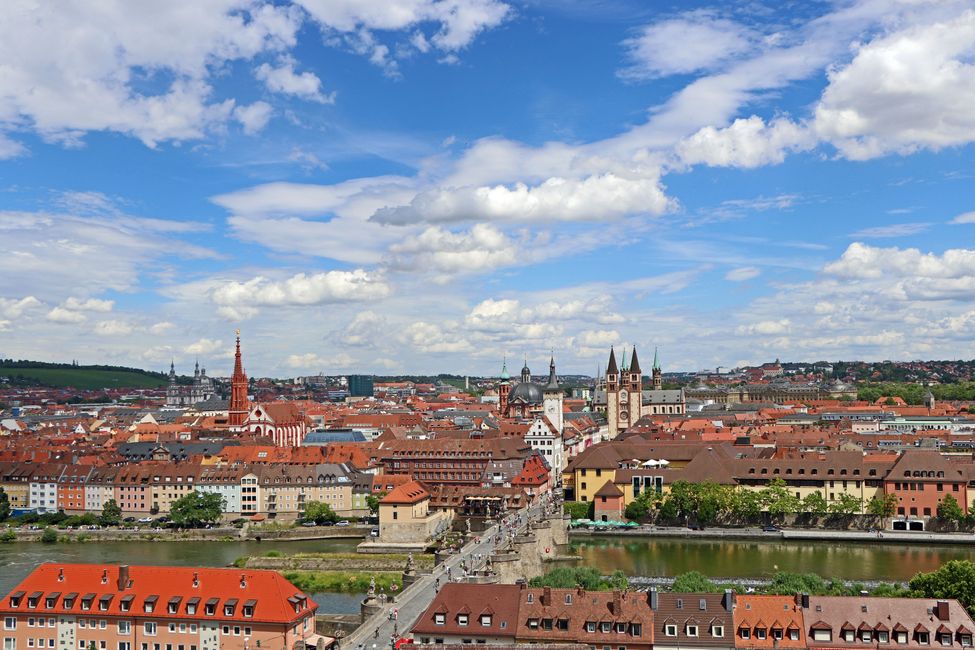
רייזע ריפּאָרץ דייטשלאנד

